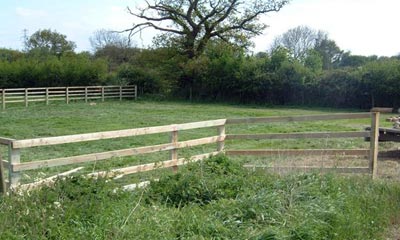Record shortage of land to fuel continued property price boom
A record shortage of land available to developers of new homes is set to fuel the continuing property price boom and undercut the Government's ambitions to expand housing supply, according to research.
Housing developers have just two and a half years' supply of land available with appropriate planning permission, based on the pace of construction, an analysis by the estate agency FPD Savills shows.

If the pace of building were to pick up from what the study calls an “extremely low” rate, and rise towards the levels demanded by ministers and the market, there would be just over one year’s supply of suitable land, the findings suggest.
Housing starts are at their lowest levels since the end of the Second World War. Kate Barker, a member of the Bank of England’s Monetary Policy Committee, is working on a review of housing supply ordered by the Chancellor, Gordon Brown.
The Savills analysis highlights how a severe shortage of land for residential development has helped to drive property prices higher.
In 1992 land costs accounted for only 15 per cent of the value of a new home but by last year this proportion had risen to 34 per cent.
The land shortage is likely to help to keep property prices climbing and worsen the problems confronted by hundreds of thousands of would-be first-time buyers struggling to afford a home, the study, carried out for SmartNewHomes.com, a property website, says.
It notes that the stock of residential land banks open for development was nearly a third smaller by 2001 than in 1999.
In the wake of last week’s launch of an overhauled planning regime by the Government, designed to tackle the logjams frustrating developers, the study also gives warning that land shortages may scupper ministers’ aim to have 200,000 homes built in the South East around Milton Keynes, Ashford, Thames Gateway and Stansted.
“It is highly unlikely that the Government can ever achieve these sorts of targets,” said David Bexon, chief executive of SmartNewHomes, whose website covers 77 building groups, representing half of the new-build market. Mr Bexon said that the Government was paying lip service to the objective of expanding supply.
He added: “Some groups will insinuate that greedy developers are sitting on acres of unused land banks, but this is simply not the case. Much of the land that developers are said to hold does not yet have planning permission. The difficulty in getting speedy planning permission is not helping the situation.”
Mr Bexon’s criticism of the planning system was echoed by the House Builders’ Federation, which sounded a warning that last week’s planning shake-up was likely to fail.
Under the new regime, the time for planning appeals has been cut from six months to three months, while planning authorities have been obliged to give reasons for their decisions in granting permissions.

Pierre Williams, the federation’s spokesman, said: “Local planning authorities have long been blamed their inefficiency on being under-funded, under-staffed and overworked, but these changes simply increase their workload.”
Mr Williams said that increased complexity of housing schemes as a result of a drive towards higher-density, mixeduse development, may be wasted if applications could not be handled in the reduced timescales planned.
‘Big stick’ may be needed
Higher interest rates may be required before any significant slowdown in house prices emerges, a Merrill Lynch analysis concludes. Merrill says the housing market emerged from the economy’s downturn in good shape and is picking up steam. Weaker incomes growth, due to national insurance rises, means house price gains should slow into next year. Merrill’s Ian Stewart argues that it may need “the ‘big stick’ of rate hikes to cool things down”.
Times Online, 09.08.2003
